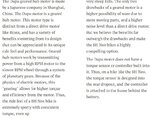Joergen8
Active Member
Hello all!
UPDATE: FREE HUB overhaul. I've now studied how to overhaul the free hub, click here to skip to the updated instructions https://electricbikereview.com/foru...reehub-parts-and-maintenance.2293/#post-59082
UPDATE2: MOTOR ROTOR and main bearings. Finally pulled out the motor to see the planetary gears.
https://electricbikereview.com/foru...reehub-parts-and-maintenance.2293/#post-46485
Long story (skip to question below):
I've had my 2015 Evo 29er for about 6 months now, and I've been servicing it myself as I do all my bikes.
I've had no technical problems thus far with over 2200km / 1400mi riding, but yesterday I propped the bike up on the repair stand and started listening to the rear cassette and freehub. It was making a telltale sandy/crunchy noise, and the cassette had some play in it.
Video:
I took off the rear wheel, took off the cassette (lock ring), and the freehub was indeed slightly loose. So I took off the locking nuts on the rear axle, used a special tool to open the cone bearing on the end of the freehub, had the usual explosion of tiny (bearing) balls, cleaned them and the freehub body in turpentine solvent, regreased the bearing grooves and reseated the balls, reassembled the b*tch of a thing after many tries of testing which shim (of various thicknesses) to ditch in order to remove the play in the freehub. Success! No more play and crunchy noises, or the very rare but annoying slip of the freehub ratchet pawls.
Now! Question: the freewheel hub body has no manufacturer details, seems somewhat specific to hub motors. Can one buy these freehubs from somewhere? Freehubs are supposed to be throwaway parts, but you can't buy these from your local bike shop. Seems to me, the lower freehub (bearing) balls are in a groove that is on the Dapu motor frame itself, and if the freehub is not serviced in time, can damage the motor frame itself.
UPDATE: no, we can't buy these. You'll have to overhaul it yourself.
Thanks!
UPDATE: FREE HUB overhaul. I've now studied how to overhaul the free hub, click here to skip to the updated instructions https://electricbikereview.com/foru...reehub-parts-and-maintenance.2293/#post-59082
UPDATE2: MOTOR ROTOR and main bearings. Finally pulled out the motor to see the planetary gears.
https://electricbikereview.com/foru...reehub-parts-and-maintenance.2293/#post-46485
Long story (skip to question below):
I've had my 2015 Evo 29er for about 6 months now, and I've been servicing it myself as I do all my bikes.
I've had no technical problems thus far with over 2200km / 1400mi riding, but yesterday I propped the bike up on the repair stand and started listening to the rear cassette and freehub. It was making a telltale sandy/crunchy noise, and the cassette had some play in it.
Video:
I took off the rear wheel, took off the cassette (lock ring), and the freehub was indeed slightly loose. So I took off the locking nuts on the rear axle, used a special tool to open the cone bearing on the end of the freehub, had the usual explosion of tiny (bearing) balls, cleaned them and the freehub body in turpentine solvent, regreased the bearing grooves and reseated the balls, reassembled the b*tch of a thing after many tries of testing which shim (of various thicknesses) to ditch in order to remove the play in the freehub. Success! No more play and crunchy noises, or the very rare but annoying slip of the freehub ratchet pawls.
Now! Question: the freewheel hub body has no manufacturer details, seems somewhat specific to hub motors. Can one buy these freehubs from somewhere? Freehubs are supposed to be throwaway parts, but you can't buy these from your local bike shop. Seems to me, the lower freehub (bearing) balls are in a groove that is on the Dapu motor frame itself, and if the freehub is not serviced in time, can damage the motor frame itself.
UPDATE: no, we can't buy these. You'll have to overhaul it yourself.
Thanks!
Last edited:


